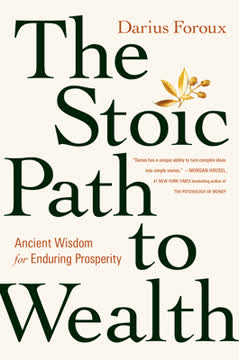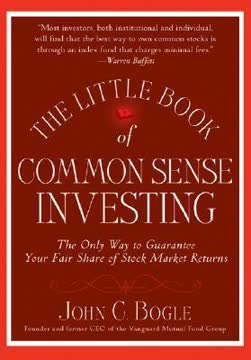重点摘要
1. 行为偏差显著影响投资决策
“因为尽管我们拥有现代化、学习和市场导向的技术,激情和情感仍然是投资中最重要的方面。”
情感驱动决策。 与传统经济理论相反,投资者并不总是理性的。行为偏差,如过度自信、从众和损失规避,常常导致次优的投资选择。这些偏差在市场动荡期间尤为明显,当情绪高涨时尤甚。
理解是关键。 识别和考虑这些偏差可以显著改善长期投资结果。通过意识到我们对新闻的过度反应、随大流或持有亏损投资的倾向,我们可以做出更理性的决策。这种自我意识通常比牛市更有价值,以决定投资成功。
背景很重要。 从南海泡沫到互联网泡沫的历史例子,展示了这些偏差如何在几个世纪以来持续影响投资者行为。通过研究这些事件,投资者可以更好地准备自己,以避免未来类似的陷阱。
2. 处置效应导致投资者卖出赢家并持有输家
“处置效应让投资者损失金钱。”
心理驱动。 处置效应源于人类希望体验实现收益的快乐,同时推迟实现损失的遗憾。这导致投资者卖出已经升值的股票,而持有那些已经贬值的股票。
适得其反的行为。 研究表明,投资者卖出的股票往往表现优于他们保留的股票,导致整体回报较低。这种行为也有税务影响,因为投资者实现了应税收益,同时错过了收获税务损失的机会。
克服偏差。 为了对抗处置效应:
- 定期根据未来前景而非过去表现审查您的投资组合
- 根据客观标准设定预定的卖出规则
- 考虑使用自动再平衡工具以维持所需的资产配置
3. 过度自信导致投资者过度交易并承担不当风险
“投资者的过度自信在许多层面上运作。”
知识幻觉。 投资者常常高估自己预测市场走势和挑选赢家股票的能力。这导致过度交易,产生成本,并通常导致表现不如买入并持有策略。
性别差异。 研究表明,男性,尤其是单身男性,往往在投资能力上比女性更自信。这导致更频繁的交易和平均较低的回报。
减轻过度自信:
- 保持交易日志以跟踪决策和结果
- 定期审查和分析您的投资表现
- 寻求多样化的观点并对相反的观点持开放态度
- 考虑使用指数基金或ETF作为核心投资组合持有
4. 从众行为推动市场泡沫和崩溃
“股市中的从众行为在上涨时很痛苦,因为群体支付过高;在下跌时很痛苦,因为反应有限。”
数量中的安全感。 人类有一种内在的倾向,尤其是在不确定的情况下,跟随人群。在投资中,这导致购买流行的股票或资产类别而没有适当的分析,推动价格达到不可持续的水平。
放大的极端。 从众行为加剧了市场泡沫和崩溃。随着更多投资者涌入一个趋势投资,价格与基本价值脱节。当情绪转变时,退出的踩踏同样可能是戏剧性的。
抵制从众:
- 制定并坚持一个明确的投资策略
- 专注于基本面分析而非价格动量
- 警惕被吹捧为“不可错过的机会”的投资
- 在极端情绪盛行时考虑逆向策略
5. 可得性偏差扭曲风险感知和投资选择
“可得性偏差是倾向于使用最容易回忆的事件来估计某事发生的概率,而不是使用更真实的历史可能性或基准率分析。”
近期效应。 投资者倾向于给予近期事件和信息更多的权重,即使它们不代表长期趋势。这可能导致对短期市场波动或新闻的过度反应。
风险误解。 戏剧性或生动的事件,如市场崩溃,比稳定增长时期更容易被回忆。这可能导致投资者高估极端事件的可能性,而低估积极结果的概率。
对抗可得性偏差:
- 定期审查长期市场数据和历史趋势
- 使用定量工具客观评估概率
- 寻求多样化的信息来源以拓宽视野
- 在投资决策中保持长期关注
6. 损失规避阻碍投资中的最佳风险承担
“损失规避导致投资者在市场下跌时卖出,因为他们损失了一些钱,并且随着每一美元的损失,痛苦增加。”
不对称影响。 研究表明,失去金钱的痛苦大约是获得同等金额的快乐的两倍。这导致投资者过于谨慎,错过潜在的盈利机会。
短期关注。 损失规避常常导致投资者过于频繁地评估他们的投资组合,导致短视的决策。这可能导致次优的资产配置和减少的长期回报。
克服损失规避的策略:
- 将投资决策框架化为长期目标而非短期波动
- 使用定期定额投资法以减少市场时机决策的影响
- 为投资组合波动设定现实的期望,并为市场低迷做好心理准备
- 考虑与财务顾问合作,在市场动荡期间提供客观指导
7. 锚定扭曲投资中的估值和决策
“锚定是一种心理偏差,在做决策时不适当地依赖于第一个、可用的或最近的信息。”
购买价格固着。 投资者常常锚定于他们为股票支付的价格,将其用作未来决策的参考点。这可能导致持有亏损投资过久或过早卖出赢家。
任意基准。 价格目标、历史高点或低点以及整数都可以作为锚,影响决策而不考虑基本价值。
减轻锚定偏差:
- 定期根据当前信息和未来前景重新评估投资
- 使用多种估值方法确定公允价值
- 预先设定价格目标和止损单以减少情绪化决策
- 考虑使用限价单自动化买卖决策
8. 对新闻和事件的过度反应导致市场效率低下
“投资者在崩盘和熊市期间过度反应。”
情感放大。 市场参与者倾向于对正面和负面新闻过度反应,导致牛市中的过度乐观和熊市中的过度悲观。
低效中的机会。 这种过度反应为纪律严明的投资者创造了机会。由于负面情绪而被超卖的股票通常在随后的时期表现优异。
管理过度反应:
- 制定系统的方法来评估新闻和事件
- 使用定期定额投资法利用市场波动
- 在极端情绪期间考虑逆向策略
- 保持多元化投资组合以减少个别股票波动的影响
9. 社会动态和情感影响投资行为
“投资于投机性资产是一种社会活动。”
信息交流。 投资者常常与朋友、家人和同事讨论投资,导致信息和错误信息的传播。这可能导致从众行为和市场泡沫的形成。
情感传染。 情绪和情感可以通过社交网络传播,影响投资决策。牛市中的狂喜和崩盘中的恐慌可以通过社交互动放大。
驾驭社会影响:
- 寻求多样化的信息和意见来源
- 对非专业人士的投资建议保持谨慎
- 制定个人投资理念以指导决策
- 考虑他人投资建议背后的动机
10. 注意力和显著性偏差影响股票选择
“投资者更有可能购买他们最近遇到的公司的股票,而不管该公司的前景、利润或基本面展望。”
有限的注意力跨度。 面对成千上万的股票,投资者倾向于关注那些通过媒体报道、异常价格波动或高交易量吸引他们注意的股票。
熟悉性偏差。 投资者常常偏好他们熟悉的公司的股票,导致次优的多元化和知名公司可能的高估。
拓宽投资视野:
- 使用筛选器和其他工具系统地识别潜在投资
- 考虑使用指数基金或ETF以获得广泛的市场曝光
- 定期审查和挑战您的投资论点
- 警惕仅基于最近新闻或价格波动的投资
11. 多元化和长期思维是成功投资的关键
“多元化是华尔街唯一的免费午餐。”
风险降低。 一个良好多元化的投资组合可以在不牺牲潜在回报的情况下降低整体风险。这是通过组合低相关性的资产实现的,如股票和债券。
时间跨度重要。 投资时间跨度越长,获得正回报的概率越高。历史数据显示,随着持有期的增加,股市产生正回报的几率显著提高。
实施成功策略:
- 在资产类别、行业和地域之间开发多元化投资组合
- 定期再平衡以维持所需的资产配置
- 专注于长期目标而非短期市场波动
- 考虑使用低成本指数基金或ETF作为核心投资组合持有
- 避免市场时机,而是持续投资
最后更新日期:
FAQ
What's The Anxious Investor about?
- Behavioral Focus: The Anxious Investor by Scott Nations delves into how emotions and behavioral biases impact investment decisions, emphasizing the importance of understanding these biases for better investment outcomes.
- Historical Analysis: The book examines significant financial bubbles and crashes, such as the South Sea Bubble and the Great Recession, to illustrate irrational investor behavior.
- Practical Guidance: Nations provides a checklist of fifteen common behavioral biases, helping readers recognize and mitigate these biases in their investing practices.
Why should I read The Anxious Investor?
- Improve Investment Outcomes: Understanding psychological factors that lead to poor investment decisions can enhance long-term financial results.
- Real-World Examples: Historical examples make the content relatable and applicable, showing how emotional responses can derail rational strategies.
- Actionable Strategies: The book offers practical strategies and checklists to help investors avoid common pitfalls, valuable for both novice and experienced investors.
What are the key takeaways of The Anxious Investor?
- Emotions Matter: Emotions play a crucial role in investing, often leading to irrational decisions that can harm financial outcomes.
- Behavioral Biases: Nations identifies fifteen specific biases, such as loss aversion and the disposition effect, that can negatively impact investment performance.
- Historical Lessons: Analyzing past market bubbles and crashes provides insights into recognizing and avoiding similar mistakes in the future.
What is loss aversion according to The Anxious Investor?
- Definition: Loss aversion is the psychological phenomenon where the pain of losing money is felt more intensely than the pleasure of gaining money.
- Behavioral Consequences: This leads to overly cautious behavior, causing investors to avoid risks that could lead to potential gains.
- Impact on Decision-Making: Nations highlights that loss aversion can cause investors to sell stocks during downturns, locking in losses instead of allowing time for recovery.
How does The Anxious Investor explain the disposition effect?
- Definition: The disposition effect is the tendency for investors to sell winning stocks too early while holding onto losing stocks for too long.
- Emotional Impact: Driven by the desire to realize gains and avoid the pain of losses, this behavior can lead to suboptimal investment decisions.
- Long-Term Consequences: This bias can significantly harm long-term returns, as investors may miss out on potential growth from winning stocks.
What is herding behavior as discussed in The Anxious Investor?
- Definition of Herding: Herding occurs when investors mimic the actions of others, often leading to irrational market movements.
- Psychological Underpinnings: The desire for social acceptance and belief that others are better informed can drive this behavior.
- Consequences: Herding can result in buying overvalued stocks and selling undervalued ones, ultimately harming investment returns.
How does The Anxious Investor address information overload?
- Definition: Information overload occurs when investors are bombarded with too much information, making it difficult to make informed decisions.
- Effects on Decision-Making: During market volatility, reacting to every piece of news can lead to hasty decisions.
- Strategies to Manage: Nations suggests focusing on key metrics and maintaining a disciplined strategy to avoid being overwhelmed.
What role does fear play in investing according to The Anxious Investor?
- Fear as a Driving Force: Fear can lead to irrational decision-making, especially during market downturns, causing investors to panic and sell at the worst times.
- Historical Context: The book examines how fear influenced behavior during significant market crashes, illustrating its detrimental effects.
- Mitigating Fear: Understanding fear's role can help investors develop strategies to remain calm and rational in volatile conditions.
How does The Anxious Investor suggest improving investment decision-making?
- Awareness of Biases: Being aware of one’s own behavioral biases and emotional triggers can lead to more rational decision-making.
- Use of Checklists: The book includes a checklist of biases and strategies to help investors evaluate decisions and avoid pitfalls.
- Long-Term Focus: Nations encourages maintaining a long-term perspective and resisting impulsive reactions to short-term fluctuations.
What role does diversification play according to The Anxious Investor?
- Importance of Diversification: Diversification is key for reducing risk and enhancing returns, spreading investments across various asset classes.
- Risk Management: This strategy helps mitigate the impact of poor performance in any single investment, creating a more stable portfolio.
- Long-Term Benefits: A well-diversified portfolio is more likely to withstand market fluctuations and achieve better long-term results.
What are some common behavioral biases identified in The Anxious Investor?
- List of Biases: Nations identifies fifteen biases, including the disposition effect, loss aversion, overconfidence, and herding behavior.
- Understanding Biases: Recognizing these biases is crucial to avoid making emotional decisions that can lead to poor financial outcomes.
- Practical Application: The book provides a checklist to help investors assess their susceptibility and develop strategies to counteract them.
What are the best quotes from The Anxious Investor and what do they mean?
- “I can calculate the motions of the heavenly bodies, but not the madness of the people.”: Highlights the limitations of rational analysis in the face of human emotions and irrational behavior.
- “The real key to making money in stocks is not to get scared out of them.”: Emphasizes maintaining composure and a long-term perspective during market downturns.
- “Investing is about making money.”: Serves as a foundation for exploring how emotional and psychological factors can derail that goal.
评论
《焦虑的投资者》获得了褒贬不一的评价,平均评分为3.54分(满分5分)。读者们欣赏书中对市场崩溃的历史背景和对投资者行为的心理洞察。然而,许多人认为内容重复且缺乏具体的投资建议。一些人称赞该书的写作风格引人入胜,并关注投资的心理方面,而另一些人则批评其对市场历史的冗长叙述。总体而言,这本书被认为更适合新手投资者,经验丰富的读者则发现其中鲜有新信息。总体来看,书中的主要信息强调了多元化和长期思维。
Similar Books














